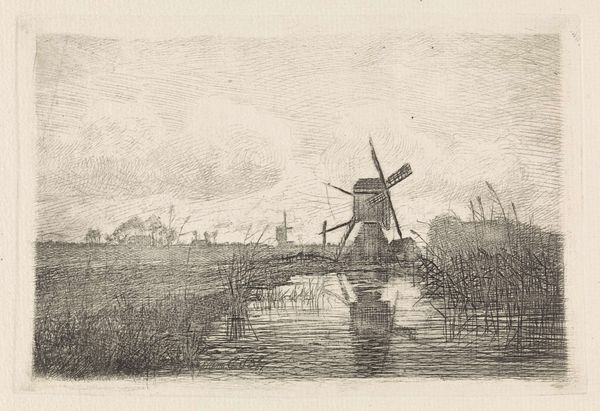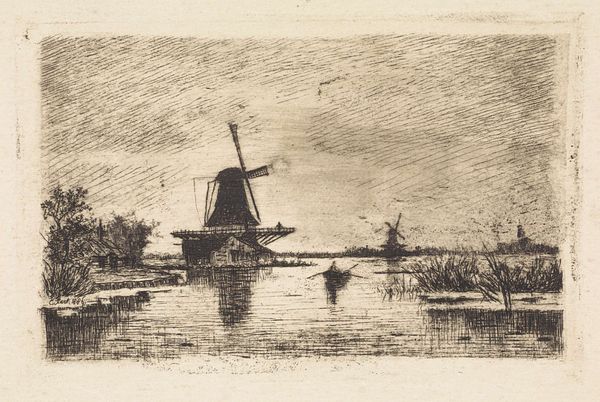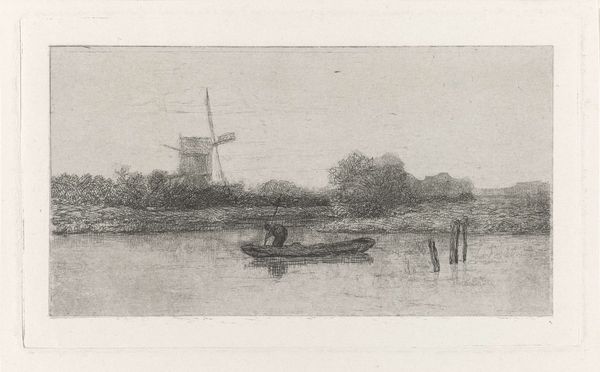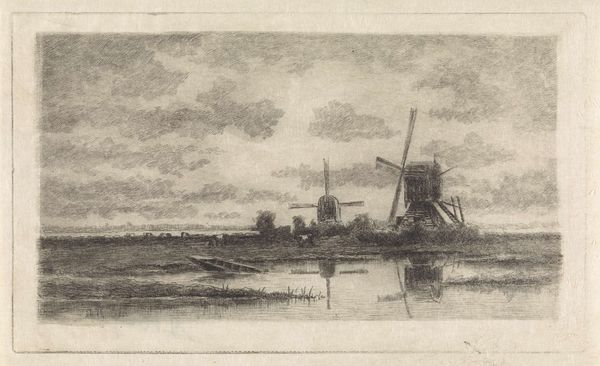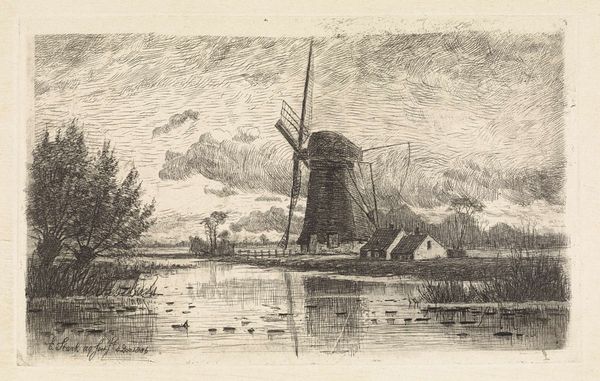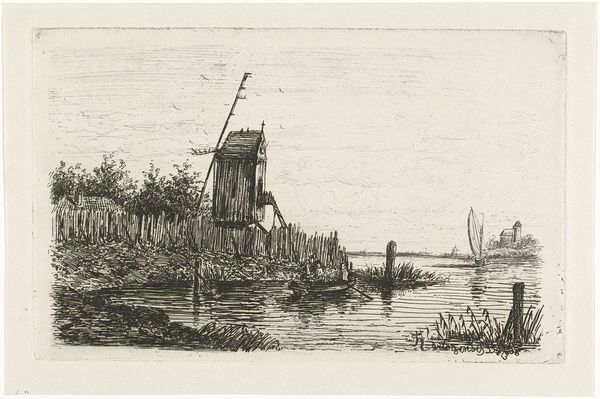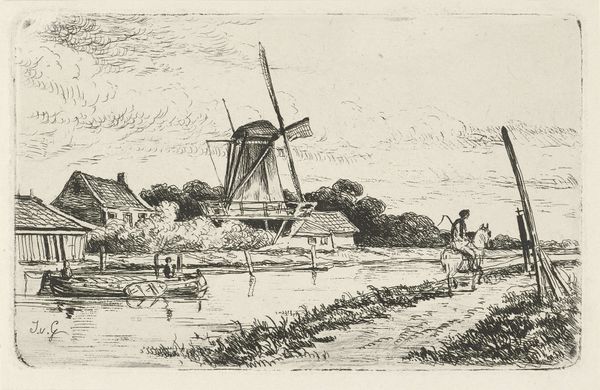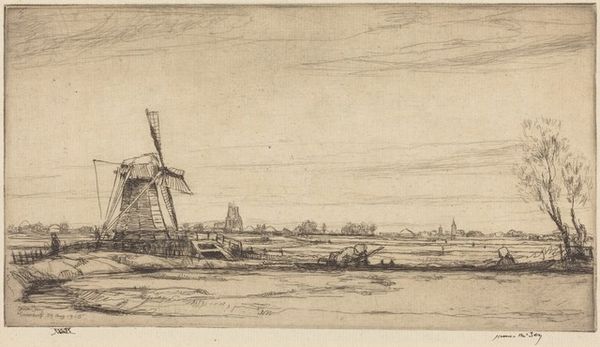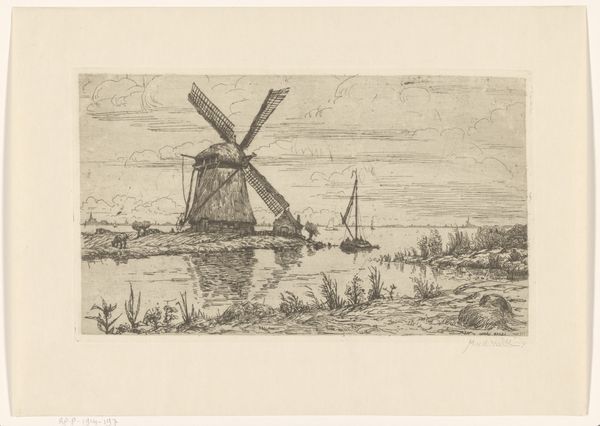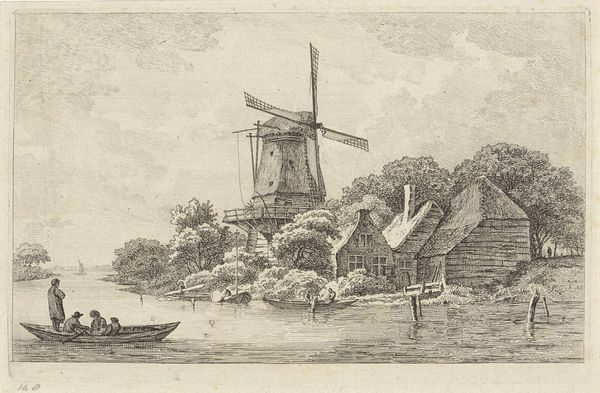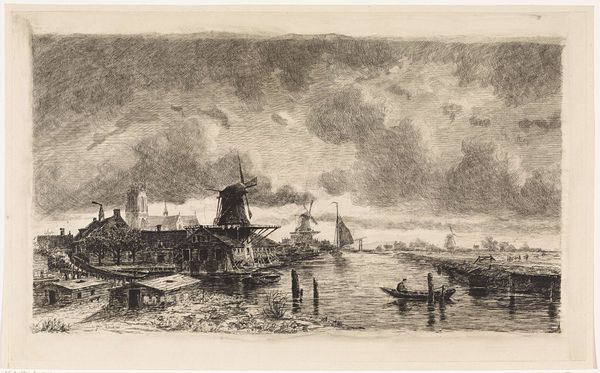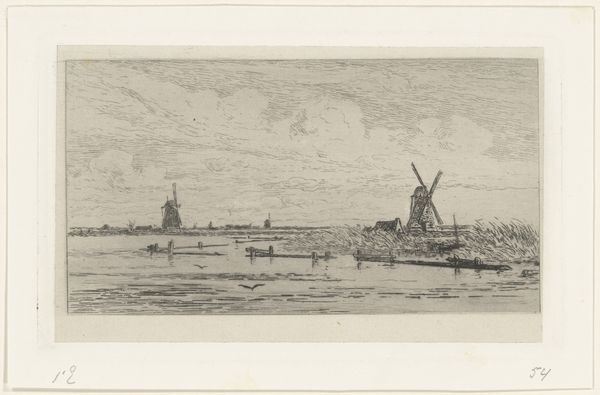
print, etching
#
dutch-golden-age
# print
#
pen sketch
#
etching
#
landscape
#
realism
Dimensions: height 78 mm, width 118 mm
Copyright: Rijks Museum: Open Domain
Elias Stark made this etching, Landschap met twee molens en een roeiboot, or Landscape with two windmills and a rowboat. He used a metal plate, likely copper or zinc, and acid to create this small but evocative print. Consider the labor involved: first, the artist coats the plate with a waxy, acid-resistant ground. Then, using a sharp needle, he carefully scratches away the ground to reveal the metal underneath. The plate is then submerged in acid, which bites into the exposed lines, creating grooves. The deeper the bite, the darker the line will appear in the print. Finally, the plate is inked, wiped clean, and pressed onto paper. The ink held in the etched lines transfers to the paper, producing the image we see. The atmospheric perspective and fine details, such as the windmills and reflection in the water, speak to Stark’s skill. Etching was embraced by artists and printmakers because it enabled the relatively easy and accurate reproduction of artwork, playing an important role in the rise of visual culture. Ultimately, appreciating this small print is about understanding the craft and care that went into its making.
Comments
No comments
Be the first to comment and join the conversation on the ultimate creative platform.
